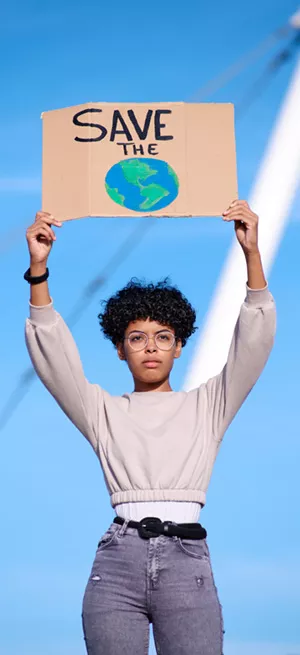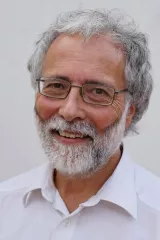In November 2015, Saúl Luciano Lliuya, a Peruvian farmer living in Huaraz in Peru, filed a lawsuit in Germany against RWE, Germany’s largest electricity producer. Mr Lliuya claims that his house in the village of Huaraz is at imminent risk of being damaged or destroyed due to an outburst flood from a glacial lake, caused by the melting of glaciers linked to climate change. Lliuya argues that RWE has contributed nearly 0,5 percent of global manmade emissions since industrial revolution. And he asked the court to order RWE to reimburse him for the same portion of the costs of establishing flood protection. A first instance court dismissed the claim in December 2016. However, the appeal court determined that the demand for damages was admissible, allowing the case to proceed.
Why is the Huaraz case unprecedented? What has made it possible?
Germanwatch:
The Huaraz case represents the first lawsuit in Europe where a person affected by the hazards of climate change has sued a private company, which is the biggest emitter of Europe.
The decision by the Higher Regional Court Hamm to enter into the evidentiary stage is a historic breakthrough: it is the first time that a court has recognised that “a private company is in principal responsible for its share in causing climate damages in other countries. This applies if concrete damages or risks for private persons or their property can partly be assigned to the activities of the relevant company.
Dr. Roda Verheyen: The Huaraz case was mostly made possible by the advancement of science, and more specifically attribution science. Already in the early stages of the case, we were confident that we could do an attribution study to establish the impact of RWE’s activities on the climate.
There has never been a similar case in front of German courts. RWE previously argued that a decision had been rendered on a similar case by a High Civil Court in the 1990s, but that argument was rejected with good arguments by the Court.
What are the legal arguments in the lawsuit? What is the remedy being sought?
Dr. Roda Verheyen: The cause of action is general nuisance under the German Civil Code [section 1004 of the German Civil Code]. The plaintiff wants the company to contribute for the partial cost of protection measures if these costs are actually incurred.
What are the biggest legal, procedural and other challenges in this lawsuit?
Dr. Roda Verheyen: We already crossed the biggest hurdle in this case, which was deciding whether climate damages could give rise to corporate liability. Following objections by RWE’s lawyers, the Court decided on several occasions that businesses could be liable for climate change. From now on, we have to look at the facts and science.
However, to succeed, the claim must prove that the CO2 emissions of RWE’s plants are a cause for the imminent harm to the claimant’s property. Another legal hurdle could be the standard of proof used to determine that RWE does carry partial responsibility for the risk that the plaintiff’s property is exposed to, which has not been fully decided yet.
What could be the impacts of the case for corporate accountability?
Germanwatch: The decision by the Higher Regional Court Hamm demonstrates that there is significant litigation risk for polluting companies to be sued for damages. This, in turn, makes what was once an abstract risk into an increasingly material and concrete risk for carbon majors which carries - in our opinion - a number of legal consequences. First, carbon majors have to inform their shareholders about this material and concrete risk. And they have to build financial reserves (provisions) to prepare for such scenarios. Second, accounting firms (actuaries) have a fiduciary duty to report about this risk in the annual report of relevant companies. Third, institutional investors (pension funds, life insurers, etc.) investing the money of clients have the fiduciary duty to take this new risk into account. Finally, insurers must also ask relevant companies about their liabilities and consider whether coverage is appropriate.
What could be its impacts for climate justice?
Germanwatch:
The case itself is an example of climate justice par excellence: its purpose is to support especially vulnerable people affected by climate change.
An emitting private company would be ordered to contribute to protecting against climate-change induced flooding risks in Huaraz, proportionally to its historic CO2 emissions. In our opinion, this is would constitute a just solution – at least in the face of the absence of political solutions.
On a broader scale, the Huaraz case is a legal test case to clarify responsibilities for climate change and its consequences. This is why we see this case as having a long term positive impact for climate justice. The ultimate goal of almost all litigation towards climate justice is to establish a global political responsibility that makes such lawsuits unnecessary. We believe that the Huaraz case further emphasises the necessity to readjust climate politics globally, and to put pressure on politicians and on fossil industries to support people affected by climate risks. It is time to establish responsibilities for loss and damage caused by man-made climate change. In addition, this case contributes to raising the pressure on fossil industries to find new business models.
Could this lawsuit be replicated in other countries? Or against other industries responsible for climate change?
Dr. Roda Verheyen: Many jurisdictions have similar rules to the ones used in this case, with certain variations. I would think it is entirely possible to replicate this lawsuit in theory, but bringing evidence in front of the court is always difficult and must be done case-by-case. As for other industries, it is difficult to say because under German law an injunction is based on emissions, not on the activity itself, which is why lawsuits are based on wrongful conduct.
Why are you “only suing” RWE? Are you claiming that they “knew” about the consequences of their activities on the climate?
Dr. Roda Verheyen:
We are suing RWE because it is the single largest European emitter, and its historical responsibility for climate change is huge.
We are not using the argument that they knew about the consequences of their activities, because we did not have to. We are aware of the work done by the Center for International Environmental Law around corporate liability for climate change and thought about compiling further evidence that RWE misled the public about the risks associated with their plants, but we did not need to in order to make our argument in this case. We did argue foreseeability in relation to the flooding risk, but not in the context of arguing that RWE committed a wrongdoing or deceived the public.
Has the lawsuit had an impact on RWE's policies? Did you engage with the company?
Germanwatch: RWE is in a challenging phase of a transformation from an old business model based on fossil energies to a new one, which is compatible with the Paris Agreement and the 2030 Agenda. Within the next six months Germany will decide about a date to phase out of coal. We will carefully watch the role of RWE in this debate. Our impression is that some in the company welcome the Huaraz case as a further reason for change, while others - likely the majority - see it as a threat.
We expect that investors will signal RWE that the lawsuit will have consequences for carbon majors - in Germany and around the world. The old business case based on lignite and coal is more and more risky - due to regulative challenges and due to litigation.
We have had a long dialogue with RWE in different contexts, - not only on climate and energy, but also on CSR and with the German Global Compact Network. Christoph Bals, executive director of Germanwatch, was at the time of the launch of the case in a sustainability advisory council for the RWE CEO and stayed in this council until RWE and Innogy were separated. Soon RWE and the renewable energy business of Innogy will be merged again - and we hope that the company sees the signs of the time.
Do you see a risk of “legal retaliation” or counter-suit by the defendant?
Dr. Roda Verheyen: We would hope that courts would recognise what would constitute a Strategic Lawsuit Against Public Participation (SLAPP) in this case, but this kind of proceedings are very rare in Germany.
What costs is the crowdfunding campaign aiming to cover and why was this method of fundraising chosen?
Germanwatch: The crowdfunding campaign on betterplace.org is run by “Stiftung Zukunftsfähigkeit“, not Germanwatch. This foundation and Germanwatch work closely together but are independent entities. The crowdfunding aims to cover the court and attorneys’ fees as well as the high costs of the scientific reports that are required for the evidentiary stage of the suit.
This model of fundraising was chosen for two major reasons. First, out of necessity: the suit - e.g. the scientific studies - are very costly. Second, because crowdfunding has the advantage of allowing people to show their solidarity.
What are the latest developments in the lawsuit?
Dr. Roda Verheyen: The plaintiff and the defendant submitted proposals of experts who could be heard in court. However, RWE’s lawyers rejected all of the experts proposed by the plaintiff, and proposed experts who have no experience with the concrete attribution of damages to climate change. The Court recently announced that it would select the experts itself. The hearing of evidence will occur in the Higher Regional Court of Hamm.
The interview was first published by the Business & Human Rights Resource Centre.




